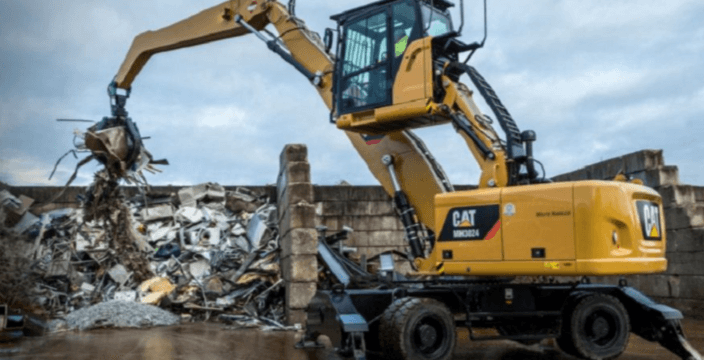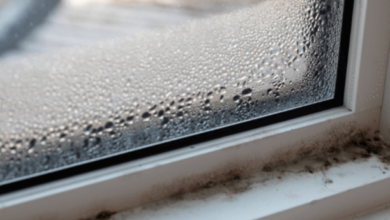Top Safety Tips for Demolition Projects

Demolition projects, whether large-scale industrial demolitions or small home renovations, involve significant risks. Proper safety measures are critical to prevent accidents, injuries, and even fatalities. In this comprehensive guide, we’ll explore the top safety tips for demolition projects, providing you with the knowledge needed to execute these tasks safely and efficiently.
Understanding the Risks in Demolition Projects
Before diving into the safety tips, it’s crucial to understand the inherent risks in demolition work. Demolition projects involve the tearing down of structures, which can lead to unexpected hazards. These include structural instability, the presence of hazardous materials like asbestos, falling debris, and exposure to electrical and gas lines. Recognizing these risks is the first step in ensuring safety on the job.
Planning and Preparing for a Safe Demolition
One of the most important aspects of a safe demolition project is thorough planning and preparation. This process involves several critical steps:
- Site Assessment: Conduct a detailed assessment of the site to identify potential hazards. This includes checking for asbestos, lead paint, and other hazardous materials.
- Permits and Regulations: Ensure all necessary permits are obtained and that the demolition complies with local regulations.
- Developing a Safety Plan: Create a comprehensive safety plan that includes emergency procedures, roles and responsibilities, and communication protocols.
Ensuring Proper Training and Certification
Training is essential for anyone involved in a demolition project. All workers should be properly trained in the use of demolition equipment, safety procedures, and the identification of hazards. Certification in specific areas, such as asbestos removal or working at heights, may also be required depending on the nature of the project.
Personal Protective Equipment (PPE): A Must-Have
Personal Protective Equipment (PPE) is non-negotiable on a demolition site. The specific PPE required will depend on the project but typically includes:
- Hard Hats: Protect against head injuries from falling debris.
- Safety Glasses or Goggles: Shield the eyes from dust, debris, and chemical splashes.
- Respiratory Protection: Essential when dealing with dust, asbestos, or other airborne hazards.
- Gloves and Boots: Protect hands and feet from sharp objects, chemicals, and other hazards.
- Hearing Protection: Required in environments with high noise levels.
Hazardous Materials Handling
Demolition projects often involve the removal of hazardous materials such as asbestos, lead, and mold. Proper handling and disposal of these materials are critical to avoid health risks. Workers should be trained in identifying these materials and should use appropriate PPE and containment methods to prevent exposure.
Structural Stability and Risk of Collapse
One of the most significant dangers in demolition work is the risk of structural collapse. To mitigate this risk:
- Structural Survey: Before beginning work, conduct a thorough structural survey to assess the stability of the building.
- Controlled Demolition Techniques: Use controlled demolition techniques, such as explosives or machine-operated demolition, to ensure the structure comes down safely.
- Monitoring: Continuously monitor the structure throughout the demolition process for signs of instability.
Securing the Site
A secure site is a safer site. Here are some ways to secure your demolition site:
- Fencing and Barricades: Erect fencing and barricades to keep unauthorized personnel out of the danger zone.
- Signage: Post clear warning signs around the site to alert workers and the public to potential dangers.
- Access Control: Limit access to the site to only those who are necessary for the project and ensure they are aware of the safety protocols.
Handling Heavy Machinery Safely
Heavy machinery, such as excavators, bulldozers, and cranes, are commonly used in demolition projects. Safe operation of this equipment is vital:
- Operator Training: Ensure all machinery operators are fully trained and certified to use the equipment.
- Regular Maintenance: Conduct regular maintenance checks to ensure the machinery is in good working condition.
- Safe Operation Practices: Follow best practices for safe operation, such as maintaining a safe distance from other workers and being aware of the machine’s blind spots.
Dust and Debris Control
Dust and debris are inevitable in demolition projects, but they must be controlled to ensure safety:
- Water Spraying: Use water spraying techniques to keep dust levels down.
- Debris Removal: Remove debris from the site promptly to prevent accumulation, which can pose trip hazards and obstruct access routes.
- Air Quality Monitoring: Continuously monitor air quality to ensure dust and particulate levels remain within safe limits.
Electrical and Gas Line Safety
Demolition projects often involve working around existing electrical and gas lines, which pose significant risks:
- Utility Shut-Off: Before beginning work, ensure all utilities are shut off and locked out.
- Marking and Mapping: Clearly mark and map all electrical and gas lines to avoid accidental damage.
- Specialist Involvement: If electrical or gas lines need to be removed or altered, involve specialists to perform the work safely.
Emergency Preparedness and Response
No matter how well-planned a demolition project is, emergencies can still occur. Being prepared can make all the difference:
- First Aid Kits: Ensure that first aid kits are readily available on site and that workers know where they are located.
- Emergency Drills: Conduct regular emergency drills to ensure everyone knows what to do in case of an emergency.
- Communication: Establish clear communication channels for reporting emergencies and ensure everyone on site knows how to use them.
Environmental Considerations
Demolition projects can have a significant impact on the environment if not managed properly:
- Waste Management: Develop a waste management plan to ensure that demolition debris is disposed of in an environmentally responsible manner.
- Recycling: Where possible, recycle materials such as metal, concrete, and wood to minimize waste.
- Noise and Vibration Control: Implement measures to control noise and vibration, which can disturb neighboring areas.
Inspections and Audits
Regular inspections and safety audits are crucial to maintaining a safe demolition site:
- Daily Inspections: Conduct daily inspections of the site to identify and address any new hazards that may arise.
- Third-Party Audits: Consider hiring third-party auditors to conduct regular safety audits and provide an unbiased assessment of safety practices.
Legal and Insurance Considerations
Understanding the legal and insurance requirements for demolition projects is essential for compliance and protection:
- Liability Insurance: Ensure that the project is covered by appropriate liability insurance to protect against potential claims.
- Legal Compliance: Familiarize yourself with local, state, and federal regulations governing demolition projects and ensure full compliance.
- Contractual Agreements: Review all contractual agreements to ensure they include provisions for safety and risk management.
Communication and Coordination
Effective communication and coordination are key to a safe demolition project:
- Toolbox Talks: Hold regular toolbox talks to discuss safety issues and update workers on any changes to the plan.
- Coordination with Subcontractors: Ensure that all subcontractors are aware of the safety protocols and are working in coordination with the main team.
- Clear Communication Channels: Establish and maintain clear communication channels to ensure that everyone on site is informed and aware of their responsibilities.
Fatigue Management
Demolition work can be physically and mentally demanding, leading to worker fatigue. Managing fatigue is crucial to maintaining safety:
- Work Schedules: Plan work schedules to allow for adequate rest and recovery time.
- Breaks: Ensure that workers take regular breaks to rest and hydrate.
- Monitoring: Monitor workers for signs of fatigue and adjust workloads as necessary to prevent accidents.
Weather Considerations
Weather conditions can greatly affect the safety of a demolition project:
- Wind: High winds can pose a significant risk during demolition, especially when working with tall structures or cranes. Delay work if wind speeds exceed safe limits.
- Rain: Rain can make surfaces slippery and increase the risk of falls. Ensure that workers have appropriate footwear and that wet areas are flagged or cordoned off.
- Extreme Temperatures: Extreme heat or cold can affect both workers and equipment. Provide appropriate protective clothing and ensure that machinery is designed to operate under the current weather conditions.
Public Safety Measures
Ensuring the safety of the public is a critical aspect of any demolition project:
- Public Notifications: Notify the public in advance about the demolition work, including the expected timeline and any potential disruptions.
- Traffic Control: Implement traffic control measures to manage vehicle and pedestrian traffic around the site.
- Dust and Noise Control: Take steps to minimize dust and noise that could affect nearby residents or businesses.
Post-Demolition Safety
Safety considerations don’t end when the demolition is complete. Post-demolition safety is equally important:
- Site Clearance: Ensure that the site is thoroughly cleared of debris, hazardous materials, and equipment.
- Final Inspections: Conduct a final inspection to ensure that the site is safe for subsequent construction or use.
- Documentation: Document the demolition process, including any safety incidents, to learn from and improve future projects.
FAQs
What are the most common hazards in demolition projects?
Common hazards include structural instability, falling debris, exposure to hazardous materials like asbestos, electrical and gas line risks, and the operation of heavy machinery.
How can I ensure my demolition project complies with safety regulations?
Thorough planning, obtaining necessary permits, conducting site assessments, and adhering to OSHA guidelines and local regulations will help ensure compliance.
What should I do if hazardous materials are found on site?
If hazardous materials like asbestos or lead are found, halt work immediately and involve certified professionals to handle and dispose of them safely.
Why is PPE important in demolition work?
PPE is crucial for protecting workers from injuries caused by falling debris, exposure to hazardous materials, and other site-specific risks.
How can I control dust during demolition?
Dust can be controlled by using water spraying techniques, removing debris promptly, and monitoring air quality to ensure safe levels.
What role does fatigue management play in demolition safety?
Fatigue management is essential to prevent accidents caused by tired workers. Ensuring adequate rest, regular breaks, and manageable workloads are key to reducing fatigue-related risks.
Conclusion
Demolition projects are inherently dangerous, but with careful planning, proper training, and adherence to safety protocols, these risks can be effectively managed. By following the safety tips outlined in this guide, you can help ensure that your demolition projects are completed safely, efficiently, and with minimal risk to workers and the public. Prioritizing safety not only protects lives but also contributes to the overall success of the project.





